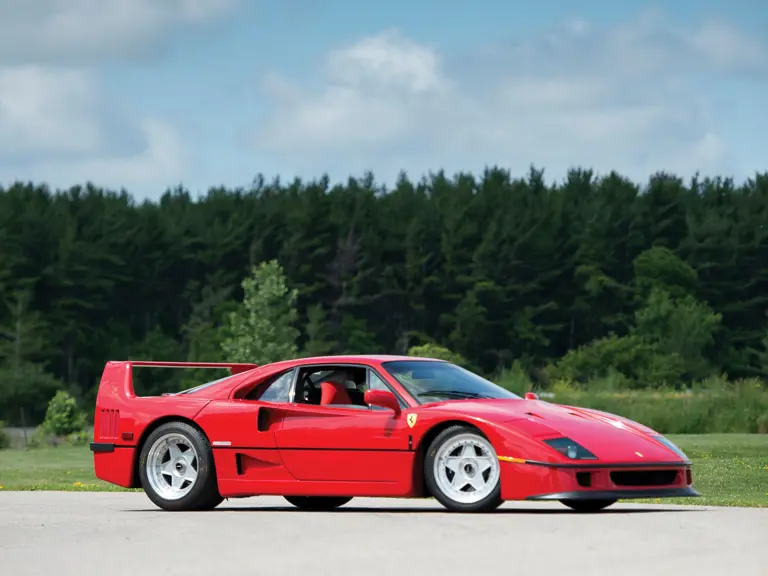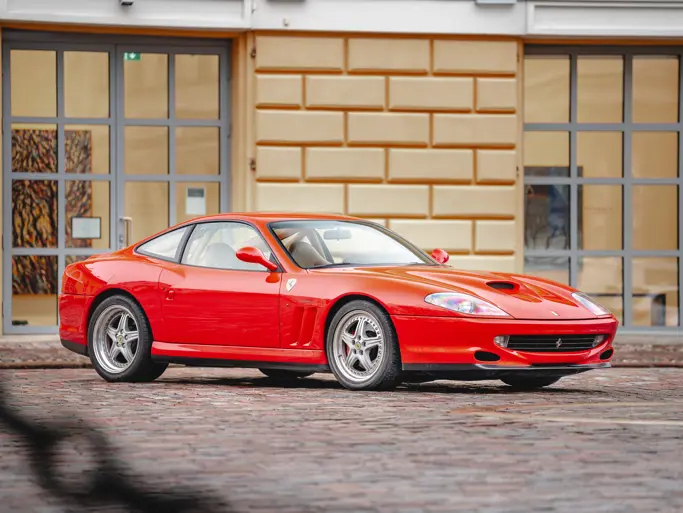In 1987, there was a supercar war raging between the big three European sports car manufacturers. Lamborghini’s Countach had turned the sports car world upside down with its radical styling and blistering performance. In 1986, Porsche’s innovative 959 introduced a number of automotive firsts and attained a top speed of 197-mph, claiming the title of the world’s fastest street legal production car. Enzo Ferrari, stubborn as he was, would not let that record stay in Stuttgart. Ferrari’s F40 was developed from Ferrari’s 288 GTO Evoluzione, and it broke a barrier akin to Glamorous Glennis breaking the sound barrier 40 years earlier: the F40 was the first production car to break 200-mph, registering a top speed of 201.4-mph.
The F40 was named in celebration of the Scuderia’s 40th birthday, and it was intended for a limited production run of around 400 units, but strong demand pushed the total production number to 1,311, with only 213 destined for the United States. Sadly, with Enzo’s death on August 14th, 1988, the F40 was the last car to receive the blessing of “Il Commendatore” before his passing, signaling the end of an era for one of the most iconic marques in automotive history.
It is easy to see why the F40 was so desirable. It featured a V-8 twin-turbo engine that could produce a monstrous 478 horsepower, and it pioneered the use of carbon fiber for its chassis, making the F40 a feather-light 2,400 pounds. Its sleek design was an example of form following function, providing both high-speed stability and fantastic airflow to the engine to keep it from overheating. Once one has carefully slid into the lightweight bucket seats, it is instantly clear that the F40 makes no compromises in the pursuit of performance. It was stripped out for racing: it had no carpets, it utilized door pulls instead of traditional handles, and it could only be optioned with roll-up or fixed windows in order to save weight. In 1987, the list price was roughly $400,000, but many traded hands for much more than that at the time.
Ferrari invested about $12 million developing a special version of the F40 that would be fully legal in the United States. Changes made to comply with EPA and DOT regulations include reinforced doors, changes to the chassis to meet safety requirements, front and rear rubber bumper strips, catalytic converters, different front lower valence, aluminum fuel tanks, and about 40 extra horsepower to make up for the added weight. Only 213 U.S. specification F40s were exported to North America.
This 1990 Ferrari F40 is chassis number 86746 and was the 60th of the 213 U.S. specification F40s produced. 86746 is reported to have been formally owned by legendary rock star, and car enthusiast, Rod Stewart and was known among many in California as the “Rod Stewart Car” because of his ownership. From 1990 to 2008, this F40 was a California car and it has been well cared for by each of its owners from the time it was new.
Having less than 7,900 original miles, this F40 is an excellent condition. Certified Ferrari Master Technician John Heim, at San Francisco Motorsports, just recently completed its compressive major service and recommended belt service. The pattern of the carbon fiber weave is still visible though the paint job because this F40 still retains its original thin paint. The correct Speedline and Ferrari etchings are still on the wheels, the clear plastic engine cover presents very well, and the red fabric covering the carbon fiber bucket seats looks virtually new. Included in the sale is the factory F40 luggage set, all books and manuals, factory tool roll, tire inflator and car cover. This F40 is mechanically flawless and ready for countless more years of use and enjoyment.
Please note an import duty of 2.5% is applicable on the final bid price should the buyer be a resident of the United States.



 | Santa Monica, California
| Santa Monica, California


